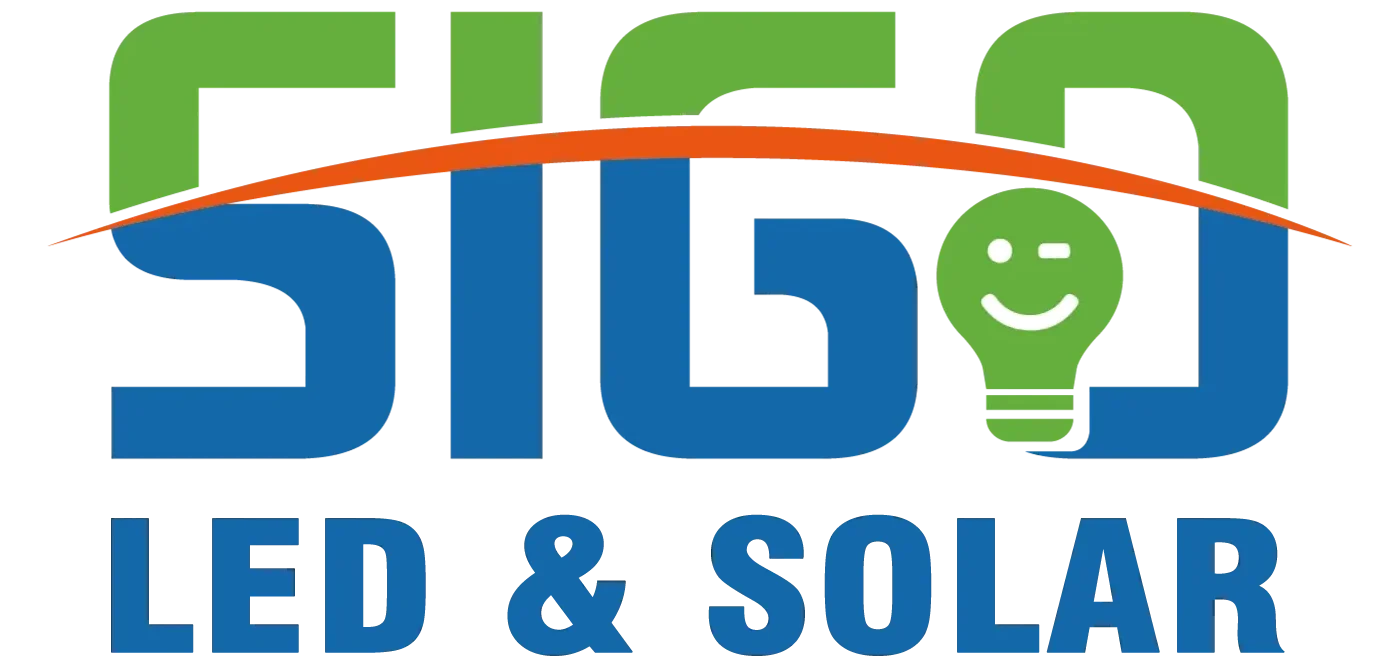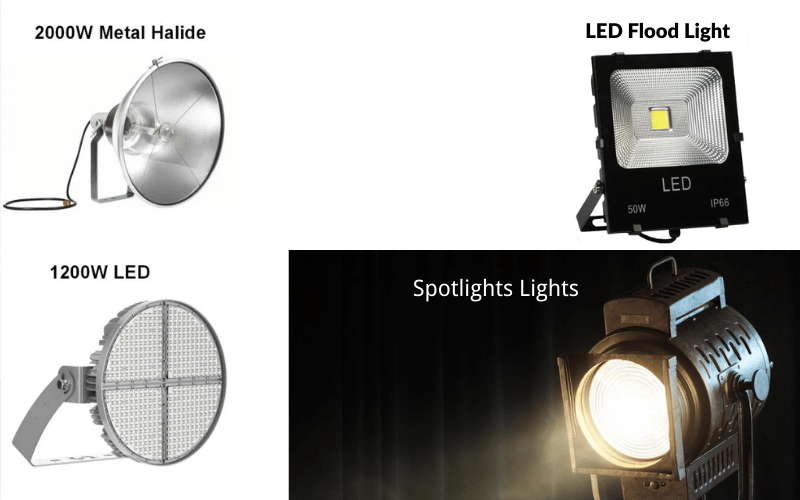Golf course lighting is more than just a functional necessity; it’s a critical element that enhances gameplay, safety, and the overall aesthetic appeal of the course. From ensuring visibility during evening play to creating a welcoming atmosphere for players and spectators, the right lighting design can transform a golf course. This article explores the benefits of modern lighting solutions, the types of lights available, and the essential steps for implementing an effective lighting system.
Table of Contents
ToggleUnderstanding Golf Course Lighting
Importance of Lighting in Golf Courses
Lighting plays a crucial role in enhancing the functionality and aesthetics of golf courses. Proper illumination ensures players can enjoy the game during evening hours while maintaining safety and visibility. Additionally, well-designed lighting highlights the course’s features, creating a visually appealing environment for players and spectators alike.
Types of Lights for Golf Courses
Golf courses use a variety of lighting solutions to meet their unique needs:
- Metal Halide Lights: Known for their bright, white light, these are traditionally used but consume more energy.
- LED Lights: Energy-efficient and long-lasting, LEDs are becoming the preferred choice for modern golf courses.
- Floodlights: These provide wide coverage, ideal for illuminating large areas like fairways and greens.
- Spotlights: Used to highlight specific areas, such as tee boxes or hazards, for better visibility.
LED Golf Course Lighting Advantages
LED lighting offers several benefits for golf courses:
- Energy Efficiency: LEDs consume significantly less energy compared to traditional lighting, reducing operational costs.
- Durability: With a longer lifespan, LEDs require less frequent replacement, minimizing maintenance efforts.
- Enhanced Visibility: LEDs provide consistent, high-quality light that improves visibility for players and enhances the overall experience.
- Eco-Friendly: LEDs produce less heat and contain no harmful materials, making them an environmentally friendly option.
- Customizable Solutions: LED systems can be tailored to meet specific lighting needs, ensuring optimal coverage and aesthetics.
Lighting Design Considerations
Key Lighting Requirements for Golf
Golf course lighting must meet specific requirements to ensure optimal visibility and safety. The lighting should provide uniform coverage across the course, minimizing shadows and glare that could affect gameplay. Additionally, it should enhance the natural beauty of the course while being energy-efficient and durable enough to withstand outdoor conditions.
Illumination Levels and Lighting Standards
Proper illumination levels are critical for maintaining visibility during evening play. Golf courses typically follow these lighting standards:
- Fairways: Require medium-level lighting to ensure players can track the ball and navigate the course.
- Greens and Tee Boxes: Need higher illumination levels for precision and accuracy during play.
- Pathways and Parking Areas: Require adequate lighting for safety and convenience.
Adhering to these standards ensures a consistent and enjoyable experience for players and spectators.
Choosing the Right Light Pole for Your Course
Selecting the right light pole is essential for effective golf course lighting. Consider the following factors:
- Height: Taller poles provide wider coverage, reducing the number of fixtures needed.
- Material: Poles made of durable materials like steel or aluminum can withstand harsh weather conditions.
- Placement: Strategically position poles to avoid shadows and ensure even lighting across the course.
- Compatibility: Ensure the poles are compatible with the chosen lighting fixtures, such as LED systems, for optimal performance.
Golf Driving Range Lighting Solutions
Best Practices for Lighting Driving Ranges
Effective lighting for driving ranges ensures players can clearly see the ball’s trajectory and landing area, even during nighttime practice. Use high-quality fixtures that provide uniform illumination across the range. Position lights strategically to minimize shadows and ensure consistent brightness throughout the playing area.
Flood Lighting Techniques for Driving Ranges
Floodlights are a popular choice for driving ranges due to their ability to cover large areas. To maximize their effectiveness:
- Use Wide Beam Angles: This ensures even light distribution across the range.
- Install at Optimal Heights: Mount floodlights on tall poles to reduce shadows and provide better coverage.
- Focus on Target Areas: Direct the lights toward key zones, such as the hitting area and landing zones, for enhanced visibility.
Addressing Glare in Lighting Design
Glare can distract players and reduce visibility, so it’s essential to address it in your lighting design. Use anti-glare fixtures or shields to direct light downward and away from players’ eyes. Additionally, opt for LED lights with lower glare ratings, as they provide bright, focused illumination without causing discomfort.
Implementation Steps for Golf Course Lighting
Assessing Lighting Conditions and Needs
Start by evaluating the specific lighting requirements of your golf course. Identify areas that need illumination, such as fairways, greens, tee boxes, pathways, and parking lots. Consider factors like the size of the course, existing light levels, and the type of play (e.g., recreational or professional) to determine the appropriate lighting intensity and coverage.
Planning Your Golf Course Lighting Layout
Design a lighting layout that ensures uniform coverage and minimizes shadows. Follow these steps:
- Map Key Areas: Highlight zones like greens and tee boxes that require higher illumination.
- Choose Light Types: Select fixtures like floodlights for wide coverage and spotlights for focused areas.
- Position Poles Strategically: Place light poles at optimal heights and angles to avoid glare and ensure even distribution.
- Account for Obstacles: Consider trees, buildings, or other structures that may block light and adjust the layout accordingly.
Installation and Maintenance of LED Lights for Golf
LED lights are the preferred choice for golf courses due to their energy efficiency and durability. During installation:
- Use Weather-Resistant Fixtures: Ensure the lights can withstand outdoor conditions like rain and wind.
- Secure Proper Wiring: Install wiring that meets safety standards and protects against power surges.
- Test Illumination Levels: Check the brightness and coverage after installation to ensure it meets the course’s needs.
For maintenance:
- Schedule Regular Inspections: Check for damaged fixtures or wiring to prevent outages.
- Clean Lenses: Remove dirt and debris from light lenses to maintain optimal brightness.
- Replace Faulty Components: Swap out any malfunctioning LEDs promptly to avoid uneven lighting.
Frequently Asked Questions
Q: What is golf course lighting and why is it important?
A: Golf course lighting involves installing light fixtures around the course to improve visibility during nighttime play. It ensures safety, enhances the playing experience, and allows golfers to enjoy their game even after sunset.
Q: What are the best lighting options for a golf course?
A: LED lighting systems are the best option for golf courses due to their energy efficiency and high-quality illumination. Floodlights and area lights are commonly used to brighten fairways, tees, and greens, ensuring consistent lighting across the course.
Q: How does lighting design affect the gameplay experience?
A: A well-designed lighting layout improves gameplay by ensuring even light distribution, reducing shadows, and minimizing glare. Proper lighting enhances visibility for players and creates an enjoyable atmosphere for nighttime golf.
Q: What factors should be considered in golf course lighting design?
A: Key factors include the course layout, specific lighting needs for different areas, maintenance costs, and compliance with lighting standards. Incorporating smart lighting technology can also optimize energy use while providing sufficient illumination for players.
Q: How do LED lighting systems compare to traditional lighting?
A: LED lighting systems are more energy-efficient, last longer, and require less maintenance than traditional lighting. They also deliver better light quality, making them a preferred choice for golf courses looking to reduce costs and improve lighting performance.
Q: What are the maintenance costs associated with golf course lighting?
A: Maintenance costs depend on the type of fixtures and the scale of the project. LED systems typically have lower maintenance costs due to their durability and long lifespan. Regular inspections and timely replacements help maintain optimal lighting levels.
Q: Can golf courses offer night golf with proper lighting?
A: Yes, many golf courses now offer night golf by using advanced lighting systems. High-quality floodlights and strategically placed fixtures ensure adequate illumination, making nighttime play a popular option for recreational golfers.
Q: What role does a lighting designer play in golf course lighting?
A: A lighting designer evaluates the course layout, identifies lighting needs, and creates simulations to visualize the lighting effect. Their expertise ensures the project meets both functional and aesthetic requirements, delivering an optimal lighting solution.
Conclusion: The Future of Golf Course Lighting
Emerging Trends in Golf Course Illumination
The future of golf course lighting is shifting toward energy-efficient and sustainable solutions. LED technology continues to dominate, offering better illumination with lower energy consumption. Smart lighting systems, equipped with sensors and automation, are becoming more common, allowing courses to adjust brightness based on time of day or player activity. Additionally, solar-powered lighting is gaining traction as an eco-friendly alternative for outdoor applications.
The Impact of Technology on Course Lighting
Advancements in technology are revolutionizing how golf courses approach lighting. IoT-enabled systems allow remote monitoring and control, making it easier to manage energy usage and maintain consistent lighting. Innovations like adaptive lighting, which adjusts to weather conditions or specific areas of play, ensure optimal visibility while reducing operational costs. These technologies not only improve efficiency but also align with sustainability goals.
Enhancing Player Experience through Effective Lighting
Effective lighting directly impacts the player experience by improving visibility and safety. Uniform illumination across the course ensures players can track their shots and navigate the terrain with ease. Thoughtful lighting design also enhances the course’s aesthetics, creating a welcoming and professional atmosphere. By adopting modern lighting solutions, golf courses can provide a superior experience that keeps players coming back.



